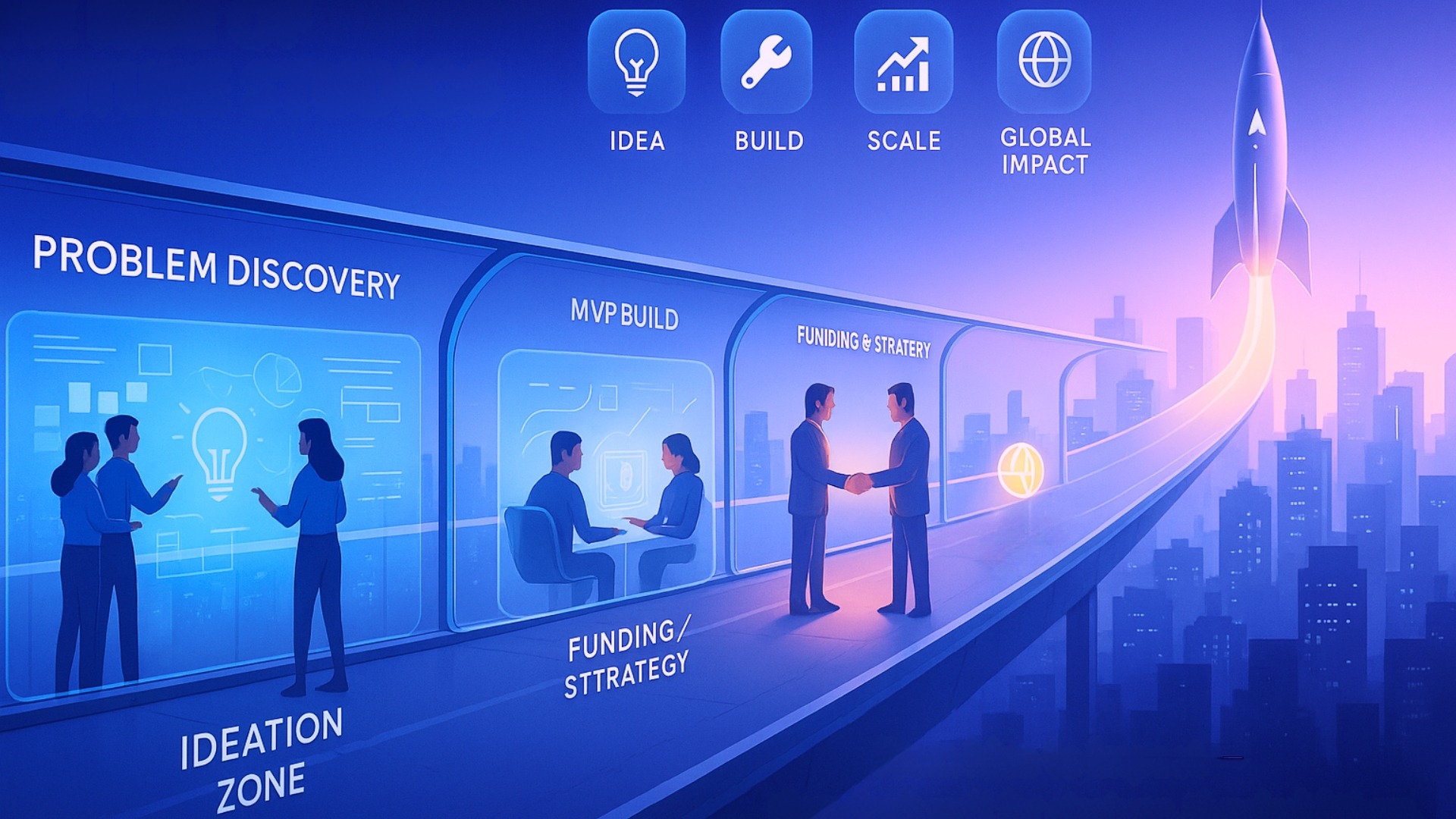Building a startup is never simple. From coming up with the idea to keeping the business alive, there are countless challenges along the way. And the truth is, not every startup struggles with the same problems. Each one has its own unique journey and sets of needs. Funding alone isn’t always the answer
Today, we have thousands of VCs across the world ready to invest. But what if, right from the stage of identifying the problem, you had a team that works with you like a mentor, a builder, and a partner? Sounds interesting, right?
That’s where something called a venture studio comes in. But what is a venture studio? A venture studio is an organization that doesn’t just invest in startups; it builds them from scratch. Instead of waiting for founders to pitch ideas, a venture studio starts with identifying real-world problems. The team then brainstorms solutions, tests ideas, and builds early versions of the product (MVP), and once there’s proof that it works, they set up a full company around it. They also bring in a founding team, provide funding, and continue to support the business as it grows.
A venture studio is like a startup factory. It creates multiple startups, one after another, using its own team, resources, and experience. So, when you have the support from a venture studio, it’s like having a co-founder, investor, and full operations team from day one. In short, VCs fund startups; venture studios create them.
And here’s an interesting point that really matters. Recent studies show that venture studios consistently deliver exceptional results, often generating Internal Rates of Return (IRR) that are nearly double those of traditional venture capital. This clearly shows that venture studios are efficient in the way they build a business. And not just that, there are even sources saying that with the venture studios, funding happens faster and they are successful. If we look at the numbers, it shows that 84% of startups built in venture studios secure seed funding, and 72% of the startups go on to raise Series A.
Funding is one part, and then the speed to market is another crucial insight that we need to consider. On average, venture studio startups reach A in just 25.2 months compared to 56 months for traditional startups. By looking at the numbers you will get a doubt: What Venture Studios are doing differently to get these numbers better? To figure this out, let’s delve into the venture studio.
How does it work, and what do they do? Venture studios follow a structured process, and that increases a startup’s chance of success. The first step of the venture studio starts with the ideation. They spend time on the problems sourcing. The problems they want to solve are not just random problems. But they have the strong numbers and research backed when they are doing that ideation. They try to find the gaps in the market. So, when they start with very strong research in the ideation stage. Then there are chances that there will be a proper market fit when you build a solution.
What traditional startups usually do is they build a product and then think about who actually needs this product, and that leads to failures. Once an idea is validated, the next step of the venture studio is to build an MVP. The studio assembles a cross-functional team including product managers, designers, engineers, and marketers who work together to bring the idea to life. This team develops the minimum viable product (MVP) with speed and precision, leveraging the studio’s in-house tools, templates, and playbooks.
This rapid prototyping phase is crucial because it helps test user behaviour, gather feedback, and iterate fast without burning too much capital. What comes next? Any guess? Funding right. One of the biggest advantages of the studio model is built-in capital. Usually when we are building a startup, funding is one of the toughest phases; it takes months to get a funding round. But in the case of venture studios, they provide early-stage funding from day one. So, when your biggest problems get solved easily, the founding team can focus on product and customer acquisition.
In many cases, venture studios bring in external co-founders to lead the startup once the foundation is set. These are often seasoned operators, domain experts, or entrepreneurial minds looking for their next big mission. So, after this point, most of the venture studio turn into advisors and guide the startups through follow-on funding rounds, partnerships, and international expansions.
Now, these are all the benefits when you want to start your journey with a venture studio. But it also comes with certain challenges and limitations. One of the biggest concerns with the venture studio model is equity dilution. Unlike traditional startups where founders often hold significant ownership, in a studio-led startup, founders typically come in after the idea has been validated and the MVP is ready.
This is a key concern from the founder’s side. But when we look from the studio side. Building companies is a resource-intensive process. Studios need strong operational teams, deep capital, and extensive networks to pull off this model consistently. Not every studio can handle more than a few ventures at a time. Scaling this model without compromising quality is a constant challenge.
So, there are other challenges that also come with the process. If you’re someone who dreams of building a startup from scratch, owning the idea, and leading it your way, the venture studio model might not always align with that vision. But if you want strong backing, deep research, faster execution, and a team that’s with you from day one, then venture studios offer a powerful way to bring ideas to life.
At the end of the day, it’s not about which model is better, but it’s about what works for you. Whether it’s going solo, raising VC money, or partnering with a studio, the goal is the same: to solve real problems and build something meaningful.
Also Read: How Sachin Bansal Is Building India’s Next Fintech Giant








